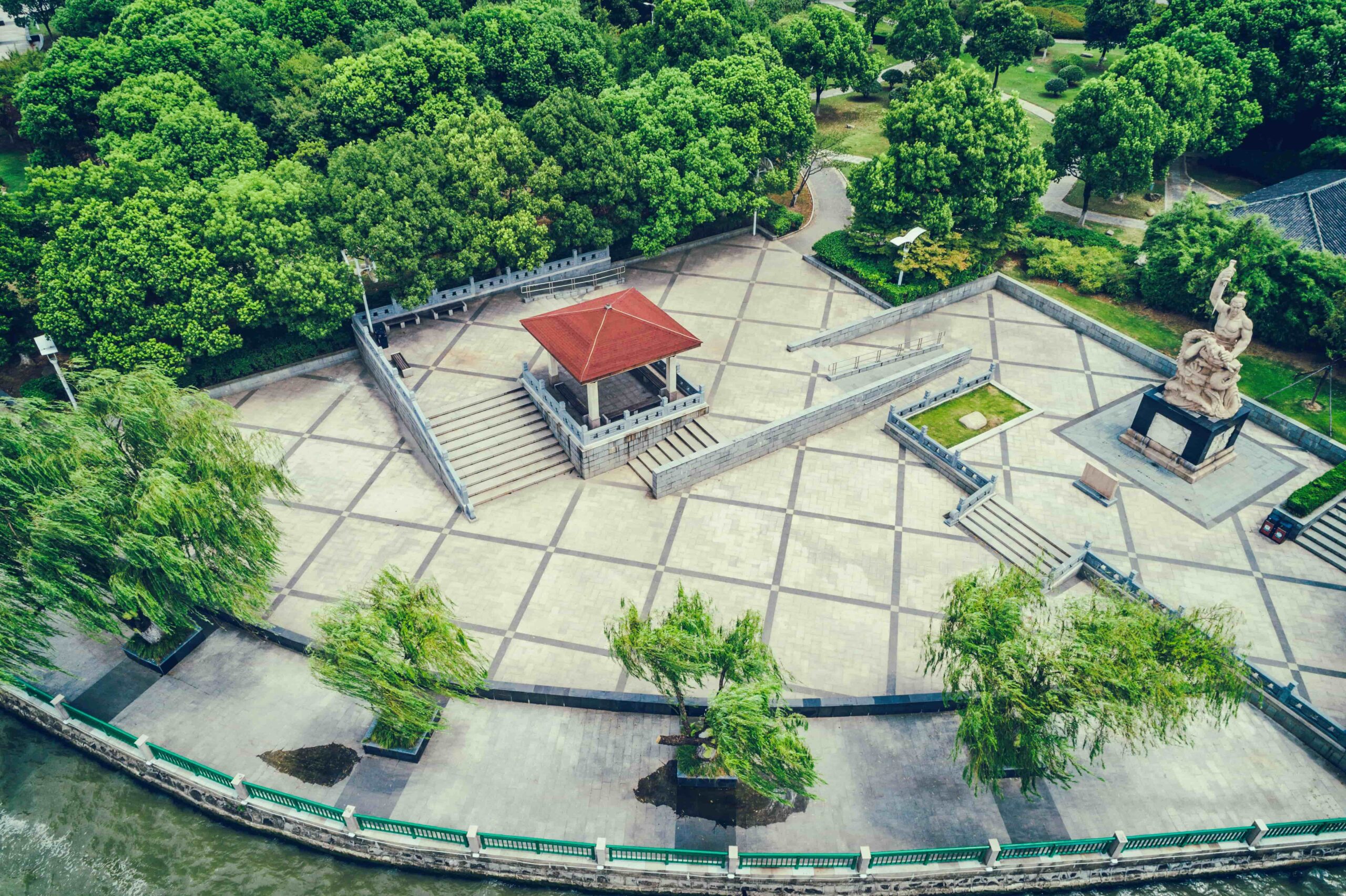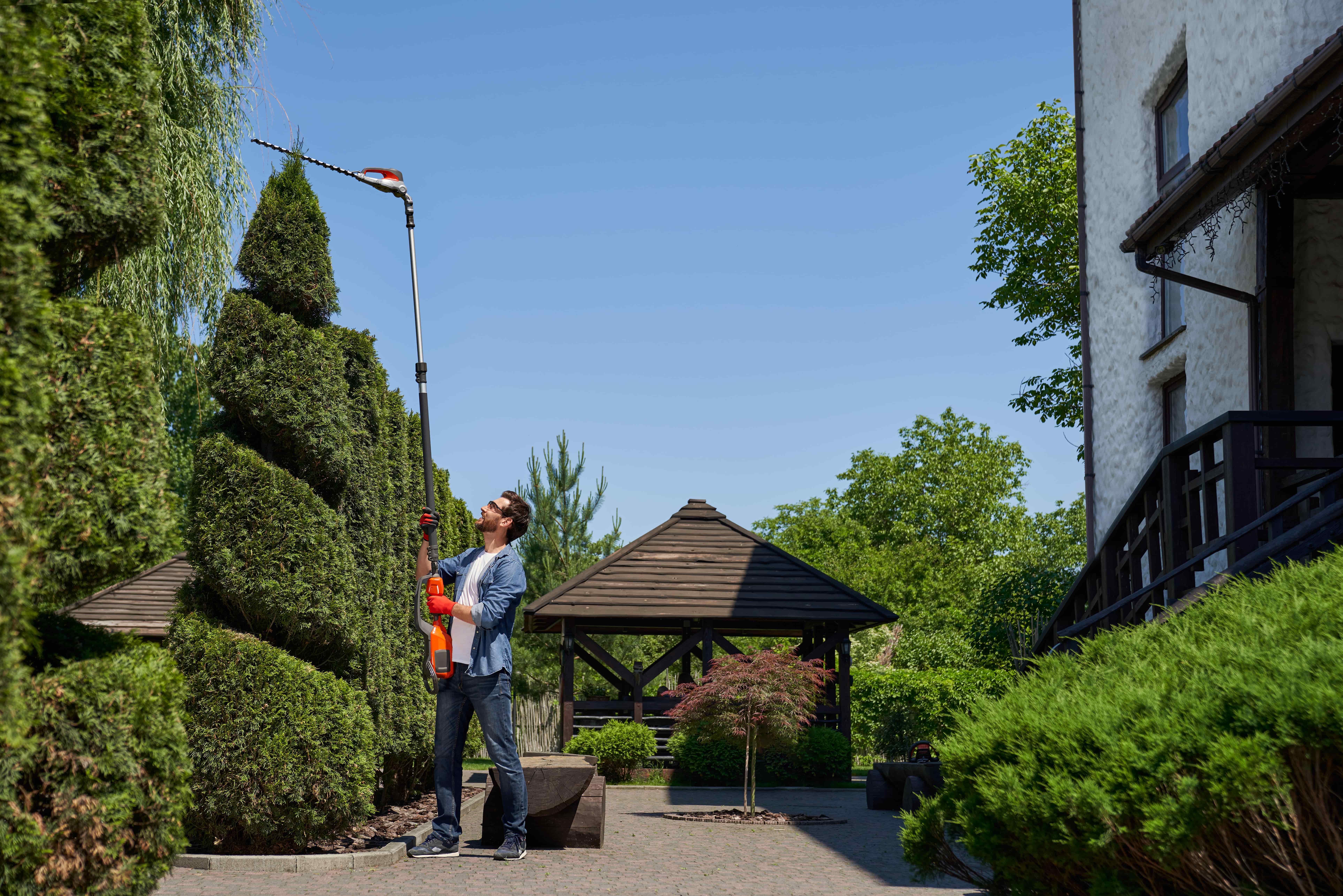
Landscaping New Home: A Comprehensive Guide for 2024
Ever wondered how a simple landscaping project can completely transform your outdoor space? From lush greenery to vibrant blooms, landscaping work has the power to turn a mundane yard into an inviting oasis. Whether you’re envisioning a cosy garden retreat or a modern outdoor entertaining area, landscaping offers boundless opportunities to express your style and create an environment that reflects your personality.
With practical tips, creative ideas, and expert insights, we’ll delve into the world of landscaping work, guiding you through the process of conceptualising, planning, and executing stunning outdoor transformations. Get ready to unlock the potential of your outdoor space as we uncover the art of landscaping with New South Homes.
Landscape Design Basics
Sustainable Practices
Incorporating native plants in landscaping work offers numerous benefits. These plants are well-suited to the local climate and soil, requiring minimal maintenance and little to no irrigation once established. For instance, planting drought-resistant succulents in arid regions can significantly reduce water usage while maintaining an attractive landscape.
Utilising rainwater harvesting systems is another sustainable practice in landscaping work. By collecting rainwater from roofs or other surfaces, it can be stored for later use in irrigation, reducing the reliance on municipal water supplies and lowering utility costs.
Implementing organic fertilisers and natural pest control methods supports a healthier environment. Instead of using synthetic chemicals that can harm beneficial insects and wildlife, organic fertilisers nourish the soil without causing harm. Natural pest control methods such as introducing predator insects help maintain a balanced ecosystem without relying on harmful pesticides.
Understanding Construction Management
Construction managers play a crucial role in overseeing landscaping projects from start to finish. They coordinate with various professionals like architects, engineers, horticulturalists, and contractors to ensure that the project meets its objectives within budget and timeframe.
Effective communication between construction managers and clients is paramount for successful landscaping projects. Clear understanding of the client’s vision helps align expectations throughout the process, resulting in a more satisfactory outcome for both parties involved.
Utilising project management software streamlines construction processes by centralising project-related information such as schedules, budgets, resources allocation, task assignments, progress tracking etc., making it easier for construction managers to monitor every aspect of the project efficiently.
Planning Your Landscape Design
Integrated Master Plan
When planning a landscape design, it’s crucial to create an integrated masterplan. This involves seamlessly integrating various elements of the landscape to achieve a cohesive and harmonious look. Factors such as topography, drainage, and existing structures must be carefully considered during the development of this masterplan. By doing so, you can ensure that your design not only looks visually appealing but also functions effectively within its environment and your custom home.
Balancing functionality and aesthetics is essential when creating an integrated master plan for landscaping work. For example, if there are natural slopes or water features on the property, these should be incorporated into the overall design rather than trying to work against them. This approach ensures that the final result not only looks beautiful but also works with the natural characteristics of the land.
Design Principles
In landscape planning, two fundamental design principles play a significant role in achieving an attractive and well-balanced outdoor space: balance and focal points.
Achieving visual balance in landscaping involves distributing various elements evenly throughout the area. For instance, if one side of your garden features tall trees or large shrubs, you can balance it out by incorporating smaller plants or decorative hardscaping elements on the opposite side. This creates a sense of equilibrium and harmony within your outdoor space.
Focal points are another crucial aspect of landscape design planning. These eye-catching features draw attention to specific areas within your outdoor space while adding visual interest. Examples include sculptures, water features like fountains or ponds, or even unique plant arrangements strategically placed to capture attention.
Scale and Color Theory
Understanding how scale affects perception is vital when planning landscape designs. It’s about ensuring that all elements within your outdoor space complement each other proportionally without overwhelming or underwhelming visitors’ senses.
Colour theory plays a pivotal role in creating visually appealing landscapes during planning stages as well. When selecting plants for your garden beds or deciding on hardscape colours for pathways and patios, consider warm versus cool colour palettes for balanced visual impact.
By carefully considering these principles during the planning phase of landscaping work—integrated master plans based on topography; balancing functionality with aesthetics; achieving visual balance through distribution; creating focal points; understanding scale effects; leveraging colour theory—you can lay a solid foundation for bringing your dream outdoor space to life.
Legal and Insurance Considerations
Building Permits
Before embarking on any landscaping work, it’s crucial to understand the local regulations regarding building permits. These permits are necessary for various landscaping projects, such as installing a new irrigation system or constructing outdoor structures. For instance, if you plan to build a deck or patio as part of your landscaping project, you may need a permit. It’s essential to familiarise yourself with these requirements before starting the project.
Working with professionals who specialise in obtaining building permits can be immensely helpful. They are well-versed in local regulations and can guide you through the process of acquiring the necessary permits for your landscaping work. They can ensure that all aspects of your project comply with building codes and zoning laws.
Contract Essentials
When engaging in landscaping work, having a comprehensive contract is vital for protecting both parties involved. The contract should include clear project objectives, timelines, payment terms, materials required, labour costs, and any additional services needed for the project.
Specifying these details helps avoid misunderstandings and ensures that both parties are aligned on expectations from the outset. In case disputes arise during or after completion of the landscaping work, outlining dispute resolution mechanisms within the contract provides a structured approach to resolving conflicts amicably.
Insurance Needs
For businesses engaged in landscaping work, liability insurance is critical for protection against potential claims or lawsuits arising from property damage or bodily injuries caused by their operations. This type of insurance shields landscapers from financial liabilities associated with accidents that may occur while working on clients’ properties.
In addition to liability insurance, ensuring workers’ compensation coverage is equally important when conducting landscaping work involving employees. Workers’ compensation provides benefits to employees who sustain work-related injuries or illnesses during their employment.
Considering additional coverage options such as property insurance for equipment and tools used in landscaping operations further safeguards against unforeseen losses due to theft, vandalism, or natural disasters.
Financial Aspects of Landscaping
Cost Considerations
Evaluating the budget for landscaping projects is crucial. It involves considering the cost limitations and ensuring that the envisioned project aligns with the available funds. Long-term maintenance costs should also be factored in when selecting materials and plants, as some may require more upkeep than others. Balancing cost-effective solutions with quality is essential to achieve desired results without overspending.
Evaluating ongoing expenses such as water consumption, fertilisers, and pest control can help anticipate long-term costs. For instance, opting for native plants can reduce water usage and minimise maintenance efforts while still enhancing the aesthetic appeal of the outdoor space.
Estimating Project Costs
To accurately estimate project costs, conducting a thorough site analysis is imperative. This includes assessing factors such as terrain complexity, existing vegetation removal needs, soil conditions, drainage issues, and any additional features like lighting or irrigation systems. Considering labour, materials needed (such as soil amendments or hardscape elements), equipment rentals if necessary (like excavators or compactors), and permits required are all vital components in estimating total project costs.
Consulting with industry professionals or utilising specialised software can aid in precise calculations by factoring in all these variables comprehensively. By involving experts from legal counsel to insurance advisors during this estimation process ensures that potential risks associated with labour-related incidents or property damage are well-covered within budget projections.
Pricing Strategies
Determining pricing strategies involves evaluating market rates for similar services provided by competitors while considering the complexity of each specific project at hand. Desired profit margins must be integrated into pricing models to ensure sustainable business growth over time.
Offering bundled services or package deals not only attracts clients but also increases overall revenue streams by upselling complementary services like regular maintenance alongside initial landscaping work. Regularly reviewing pricing strategies helps stay competitive in the market amidst fluctuating economic conditions while keeping abreast of evolving customer preferences.
Landscape Construction Essentials
Construction Tasks
The initial construction tasks are crucial. Clearing and grading the site is essential to prepare it for landscaping work. This involves removing debris, rocks, pruning, and other obstacles that could hinder the landscape’s development. Installing irrigation systems is also vital for ensuring efficient watering of plants throughout the landscape. Building hardscape features like patios, walkways, retaining walls, landscaping, and paving adds structural elements to the outdoor space.
Incorporating landscaping work ensures a solid foundation for creating an aesthetically pleasing and functional landscape that blends well with different types of homes like a single-story or split-level home.
Incorporating Mature Trees
In landscape construction, incorporating mature trees requires careful consideration. Assessing the health and stability of existing mature trees before incorporating them into the design is critical. Proper planting techniques should be employed to promote healthy growth and prevent damage to surrounding structures such as buildings or pathways. Considering the shade, privacy, and aesthetic benefits that mature trees can provide enhances the overall appeal of the landscape.
By integrating these aspects into landscaping work, one can create a harmonious blend of nature with man-made elements in outdoor spaces.
Restoring Outdated Features
Restoring outdated features plays a significant role in enhancing landscapes. Updating landscaping and paving, hedge trimming, and pruning revitalises the overall appearance of outdoor areas. Refurbishing old structures such as pergolas or gazebos contributes to giving them a fresh look while preserving their original charm. Moreover, incorporating modern design elements alongside existing features helps maintain a balance between tradition and contemporary aesthetics within landscapes.
Licensing and Career Development
Licensing Options
It’s essential to research the licensing requirements in your area. Each state or region may have different regulations for landscaping professionals. By obtaining the necessary licences, you can legally offer your services and build trust with potential clients. Consider obtaining certifications from recognized organisations such as the National Association of Landscape Professionals (NALP) or the Professional Landcare Network (PLANET). These credentials can enhance your credibility and demonstrate your commitment to excellence in landscaping.
Exploring specialised licences is also crucial, especially if you plan to offer specific services like irrigation installation or tree care. For example, becoming a Certified Irrigation Contractor (CIC) through the Irrigation Association can validate your expertise in designing, installing, and maintaining efficient irrigation systems. Similarly, acquiring a Tree Care Industry Association (TCIA) certification showcases your knowledge and skills in proper tree care practices.
- Researching licensing requirements for landscaping professionals
- Obtaining certifications from recognized organisations
- Exploring specialised licences for specific services like irrigation installation or tree care
Career Paths
In the realm of landscaping work, there are diverse career paths beyond traditional landscape maintenance. One exciting avenue is landscape architecture – a profession that combines art, science, and environmental stewardship to create sustainable outdoor spaces. Pursuing higher education in landscape architecture allows individuals to design innovative landscapes while considering ecological preservation and urban planning principles.
Another compelling career path within landscaping is horticulture – focusing on plant cultivation, propagation, breeding, genetic engineering, plant biochemistry, plant physiology, and management of pests/diseases affecting plants. This field offers opportunities for working at botanical gardens/nurseries or conducting research at agricultural institutions.
For those aspiring to advance their careers further within the industry, consider pursuing professional certifications such as becoming a Certified Landscape Professional through NALP. Entrepreneurship opportunities abound by starting a landscaping business; this path requires not only strong technical skills but also business acumen.
Current Trends in Landscape Design
Backyard Designs
Backyard designs are all about creating functional outdoor living spaces for relaxation and entertainment. Imagine having a cosy fire pit, an outdoor kitchen, or a comfortable seating area right in your backyard. These elements not only enhance the visual appeal of the space but also make it more inviting for gatherings and leisure activities. To maximise privacy, strategic plantings or fencing options can be incorporated into the design to create a secluded oasis within your property.
For instance:
- A fire pit surrounded by comfortable seating can transform a regular backyard into an ideal spot for evening gatherings.
- Privacy hedges, strategically placed trees, landscaping, and fencing can shield the yard from neighbouring properties, providing a sense of seclusion.
Modern Home Landscapes
Modern home landscapes emphasise clean lines and minimalistic design principles. The focus is on creating sleek and uncluttered outdoor spaces that complement contemporary architecture. Sustainable materials like recycled decking or permeable pavers are often used to align with eco-friendly practices while adding aesthetic value to the landscape. Moreover, technology-driven features such as smart irrigation systems and innovative outdoor lighting solutions are integrated into modern landscapes to enhance functionality and efficiency.
For example:
- A modern landscaping garden might feature geometric pathways bordered by low-maintenance ornamental grasses for a clean, minimalist look.
- Incorporating solar-powered LED lighting not only adds ambiance but also reduces energy consumption.
Creating Your New Home Garden
Several crucial factors need to be considered during the design phase. The first consideration is the local climate and weather conditions. Understanding the amount of rainfall, temperature variations, and overall climate patterns helps in selecting plants that can thrive in the specific area.
Another essential factor is the soil conditions. Different types of soil have varying drainage capabilities, nutrient levels, and pH balance. Assessing these soil characteristics ensures that chosen plants will grow healthily in their new environment.
Sun exposure also plays a significant role in landscape design in Australia. Some plants require full sun, while others thrive in shaded areas. Considering the level of sunlight your garden receives throughout the day helps determine which plant species are suitable for different areas within your landscape.
Assessing clients’ needs and preferences is vital when creating personalised designs for landscaping projects. Understanding what they envision for their outdoor space allows landscapers to tailor designs that align with their desires while also considering practical elements such as maintenance requirements and functional aspects like seating areas or pathways.
Balancing functionality with aesthetics is crucial when designing landscapes. Ensuring that outdoor spaces are not only visually appealing but also serve a purpose enhances the overall usability of the garden or yard.
Technology in Landscaping
Design Software
Utilising design software is essential for creating detailed and accurate landscape plans. Design software like AutoCAD or SketchUp allows landscape designers to develop intricate layouts, incorporating various elements such as pathways, plant beds, and water features. These tools provide a platform for visualising the final result before any physical work begins.
Specialised landscape design software for landscaping services offers additional benefits such as built-in plant libraries and 3D modelling capabilities. For instance, these programs come with extensive databases of plants, trees, and shrubs that can be easily incorporated into the designs. This feature helps designers accurately represent the intended greenery within their plans while also allowing clients to visualise the final look.
Moreover, user-friendly options are crucial when considering design software for landscaping work. The ability to collaborate with clients and contractors seamlessly is a significant advantage offered by certain programs. These platforms enable real-time adjustments based on client feedback and facilitate effective communication between all parties involved in the project.
Maximising Landscaping ROI
Improving Property Value
Enhancing curb appeal is crucial in attracting potential buyers. Well-designed landscaping can significantly increase the overall property value. By incorporating low-maintenance features such as native plants and drought-resistant grass, homeowners can ensure long-term cost savings while boosting their property’s market worth. Using high-quality materials and professional installation not only ensures durability but also adds to the aesthetics of the landscape, ultimately contributing to a higher return on investment.
Investing in sustainable practices like xeriscaping or rain gardens showcases innovative design solutions that not only add visual interest but also contribute to environmental conservation efforts. These environmentally friendly features demonstrate a forward-thinking approach that appeals to eco-conscious buyers, further enhancing the overall desirability and value of the property.
Remarkable Design Ideas
Incorporating unique focal points using unconventional materials like recycled glass or salvaged artefacts can create visually striking landscapes that set properties apart from others in the neighbourhood. These distinctive elements serve as conversation starters and leave a lasting impression on potential buyers, making them more likely to remember and consider purchasing the property.
Edible landscapes have gained popularity for their practicality and aesthetic appeal. Integrating fruit trees, vegetable gardens, or herb beds into the design not only adds visual interest but also provides an additional selling point for health-conscious individuals who appreciate farm-to-table living concepts.
Implementing sustainable practices such as green roofs offers dual benefits by providing an attractive outdoor space while reducing energy costs through improved insulation. The integration of these sustainable elements demonstrates a commitment to environmental responsibility while adding a unique feature that sets properties apart in today’s competitive real estate market.
Summary
You’ve now gained a solid understanding of the fundamental aspects of landscaping work, from design and planning to legal considerations, financial aspects, construction essentials, and career development. As you embark on your landscaping journey, remember that successful landscaping is not just about creating visually appealing outdoor spaces but also about maximising the return on your investment. Keep in mind the current trends and leverage technology to create landscaping ideas for the front yard that adds value to your property.
Now armed with this knowledge, it’s time to put your plans into action. Whether you’re designing your own garden or considering a career in landscaping, take the insights you’ve gained and start shaping your outdoor space or professional path. Embrace the creativity and practicality required for successful landscaping endeavours, and watch as your efforts bloom into vibrant, inviting landscapes. Your journey starts now!
Experience
the
Difference
Ready to start your building journey? Chat to our team of experts today and get a FREE personalised quote
Find Out More
Related Posts






